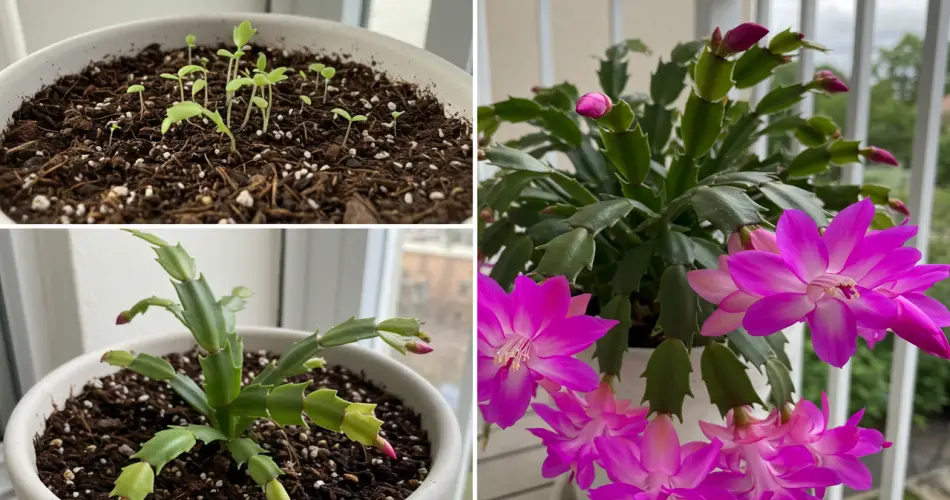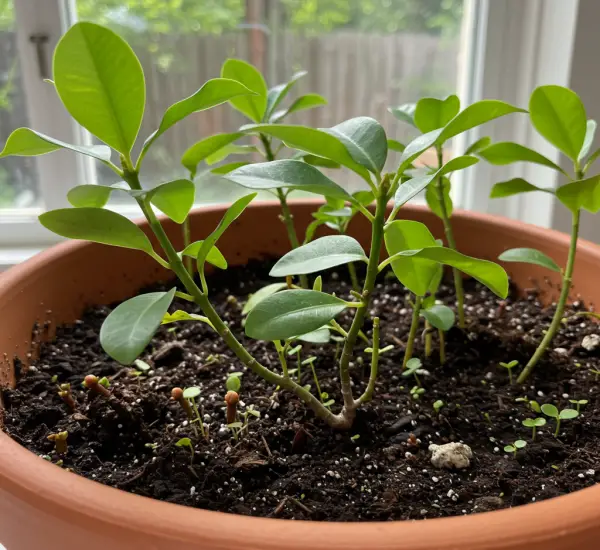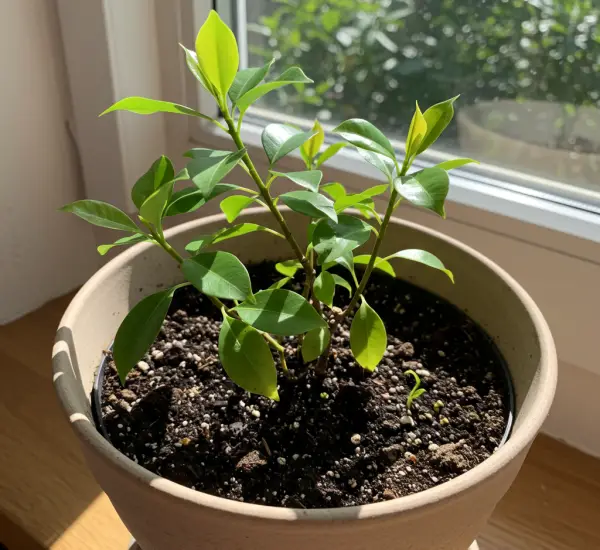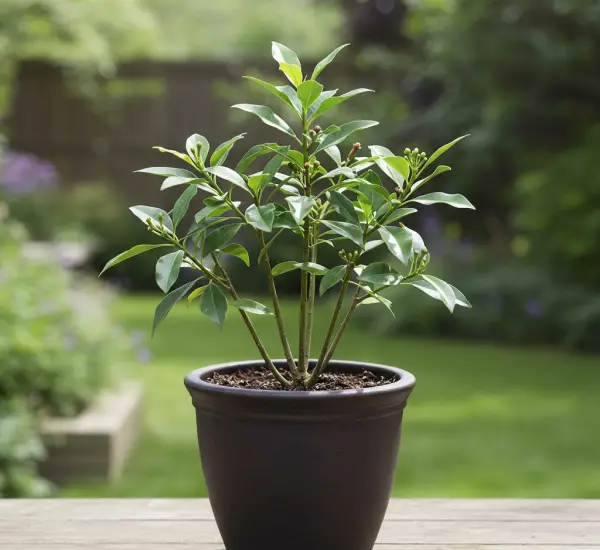The Christmas cactus (Schlumbergera) is a beloved houseplant famous for its bright, elegant flowers that bloom right in time for the winter holidays. Its colorful blossoms — often in shades of red, pink, white, or purple — add warmth and cheer to any space, making it a favorite decoration during Christmas. Yet many plant lovers struggle to make it bloom every year. The good news? With a few simple tricks, you can enjoy a lush, healthy, and abundantly flowering Christmas cactus season after season. Here’s a complete guide to help you achieve that spectacular result.
1. Positioning: Bright Light, But No Direct Sun
Light is essential for flower production, but exposure must be carefully managed. The Christmas cactus loves bright, indirect light. The perfect spot is a windowsill facing east or west, where the plant can enjoy gentle, filtered sunshine. If the light is too intense — especially from a south-facing window — use a sheer curtain to protect the plant from scorching. Too little light, on the other hand, will slow growth and prevent buds from forming.
During winter, when natural light is weaker, move the plant to a brighter place indoors, but always avoid direct sunlight. Balanced light exposure is one of the key secrets to achieving consistent flowering.
2. Temperature: Cool Air Stimulates Blooming
The Christmas cactus is native to the cool, shaded forests of Brazil, and its blooming process is triggered by temperature changes. As autumn approaches and days shorten, place the plant in a cooler room where temperatures range between 10°C and 15°C (50°F–59°F). This temperature drop signals the plant to start forming buds.
Avoid exposing it to sudden drafts or drastic temperature changes — both can cause stress and bud drop. Once buds have formed, return the cactus to a slightly warmer environment (around 18°C–20°C) to encourage full blooming.
3. Watering: Follow the Natural Rhythm
Proper watering is crucial. During spring and summer, when the plant is actively growing, water it regularly to keep the soil slightly moist — never dry, but also never soggy. Overwatering can lead to root rot, a common issue with this species.
As autumn arrives, gradually reduce watering to mimic its natural resting phase. This short “dry period” helps the plant shift energy toward bud formation. When you notice the first buds appearing, resume regular watering to support blooming.
4. Fertilization: Feed for More Flowers
Nutrients are the foundation of abundant flowering. From spring to the end of summer, feed your Christmas cactus once every two to four weeks with a liquid fertilizer for flowering plants. Choose one rich in phosphorus and potassium — both promote strong buds and vibrant blooms.
In autumn, stop fertilizing to let the plant rest. Once flowering begins, you can start feeding again to sustain the blossoms and encourage healthy growth afterward.
5. Photoperiod: Darkness is the Secret Ingredient
One of the most fascinating aspects of the Christmas cactus is its dependence on light cycles. It’s a short-day plant, meaning that it blooms when nights are long and days are short. To trigger this natural process, ensure that starting in October, the plant experiences at least 12–14 hours of uninterrupted darkness each night.
You can achieve this by covering the plant with a dark cloth or moving it to a completely dark room during the evening. Avoid exposure to artificial light, even briefly, as it can interfere with bud development.
6. Repotting: Less is More
Many plant owners repot their Christmas cactus too often, which can actually delay blooming. This plant prefers to be slightly root-bound. Repot only when the roots completely fill the pot — usually every 2 to 3 years. Do this in spring, using a well-draining soil mix made of potting soil, compost, and sand or perlite. Choose a pot only slightly larger than the previous one to avoid excess moisture retention.
7. Drooping or Falling Buds: Common Causes and Fixes
If buds fall off before they open, don’t panic — it’s often due to environmental stress. The main causes include sudden temperature fluctuations, moving the plant during the budding stage, or inconsistent watering. To prevent this, maintain a stable temperature, avoid relocating the cactus once buds appear, and water evenly without extremes.
8. After Flowering: Preparing for the Next Cycle
Once the flowers fade, your Christmas cactus enters a recovery phase. Gently remove spent blooms and reduce watering for a few weeks. Continue to provide moderate light and a comfortable temperature. During this time, the plant replenishes its energy for the next flowering cycle. A short rest period now ensures a more impressive bloom later.
Extra Tips for a Healthy Plant
-
Pest control: Check regularly for small insects or spots on the leaves. Treat infestations early with a natural insecticide or by wiping the leaves with a damp cloth.
-
Clean leaves: Dust can block light and hinder photosynthesis. Wipe the foliage occasionally with a soft, moist cloth.
-
Stable environment: Avoid exposing the plant to cigarette smoke, heaters, or air conditioners. Sudden humidity or temperature changes can harm its delicate balance.
By following these simple yet powerful tricks, your Christmas cactus will reward you with spectacular blooms right when you need them most — during the festive season. With consistent care, attention to light, temperature, and rest cycles, this beautiful plant will continue to brighten your home and bring a touch of Christmas magic every year.



